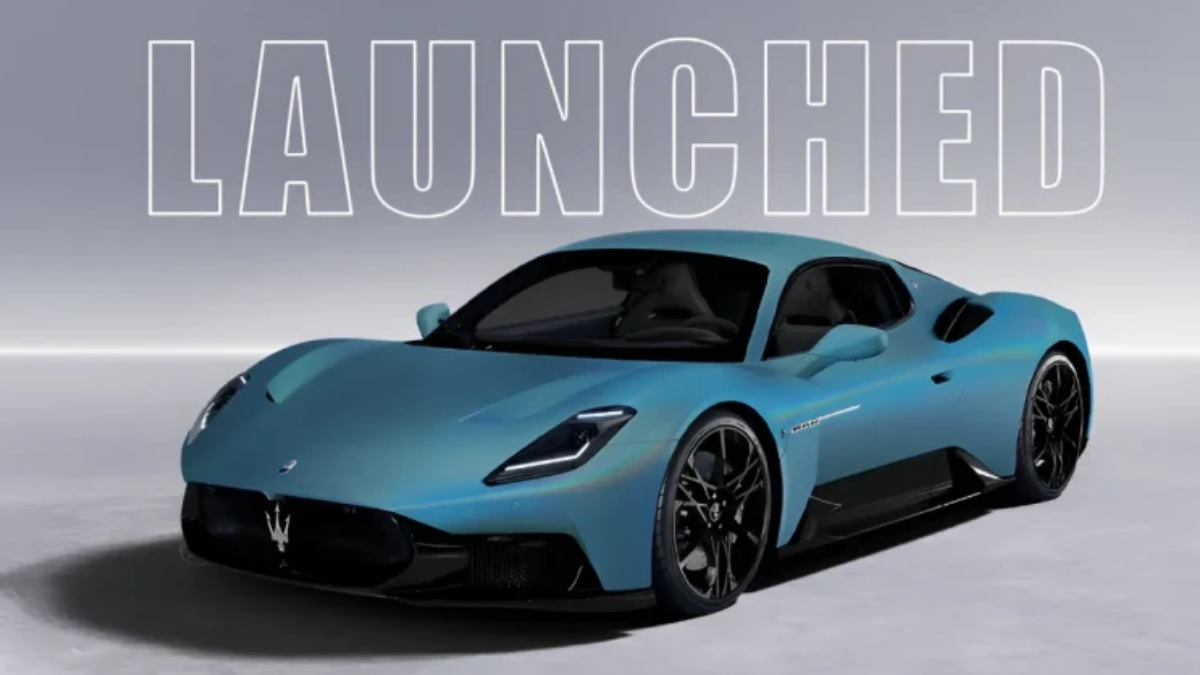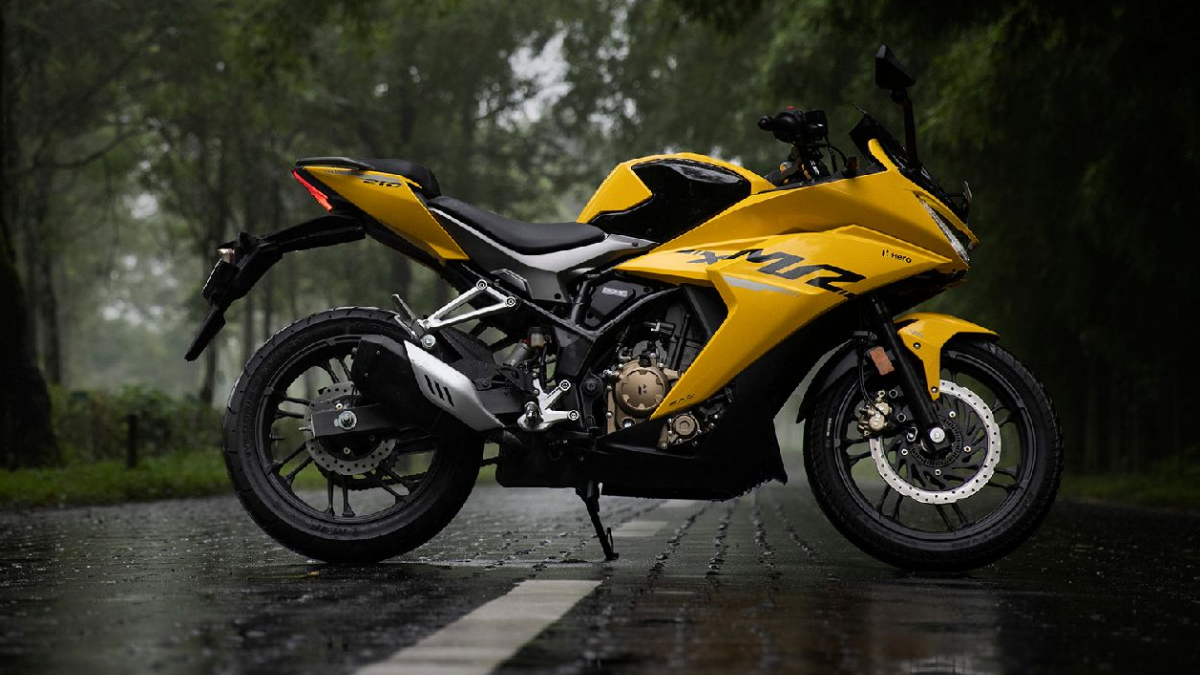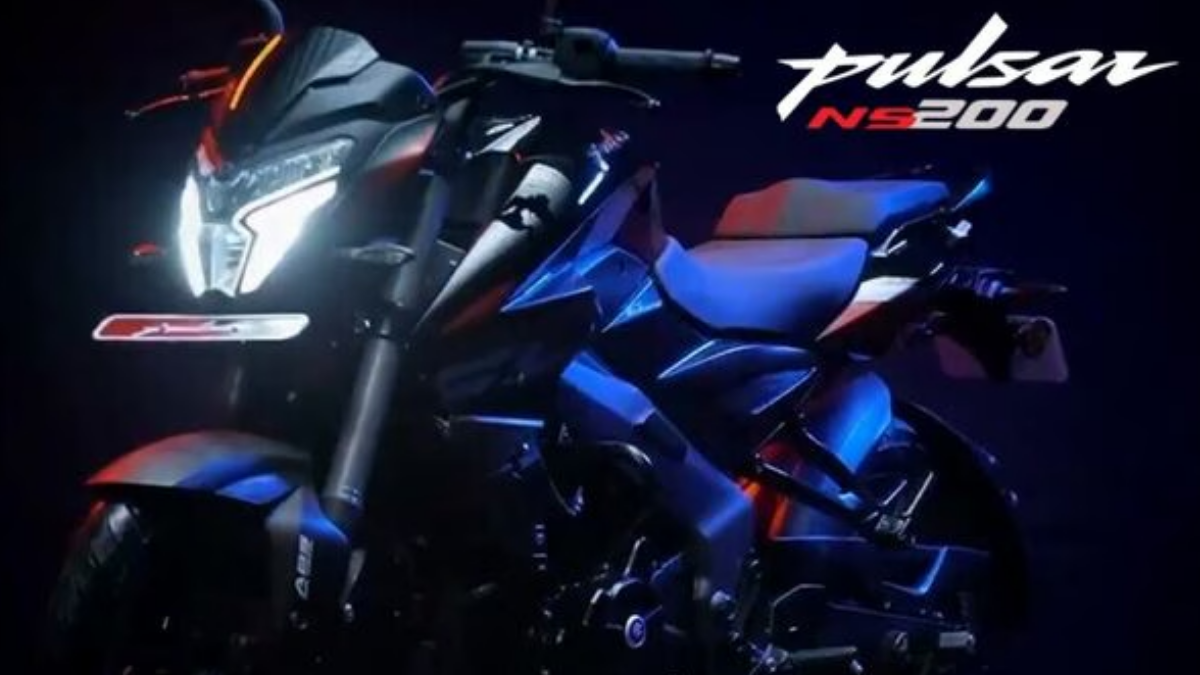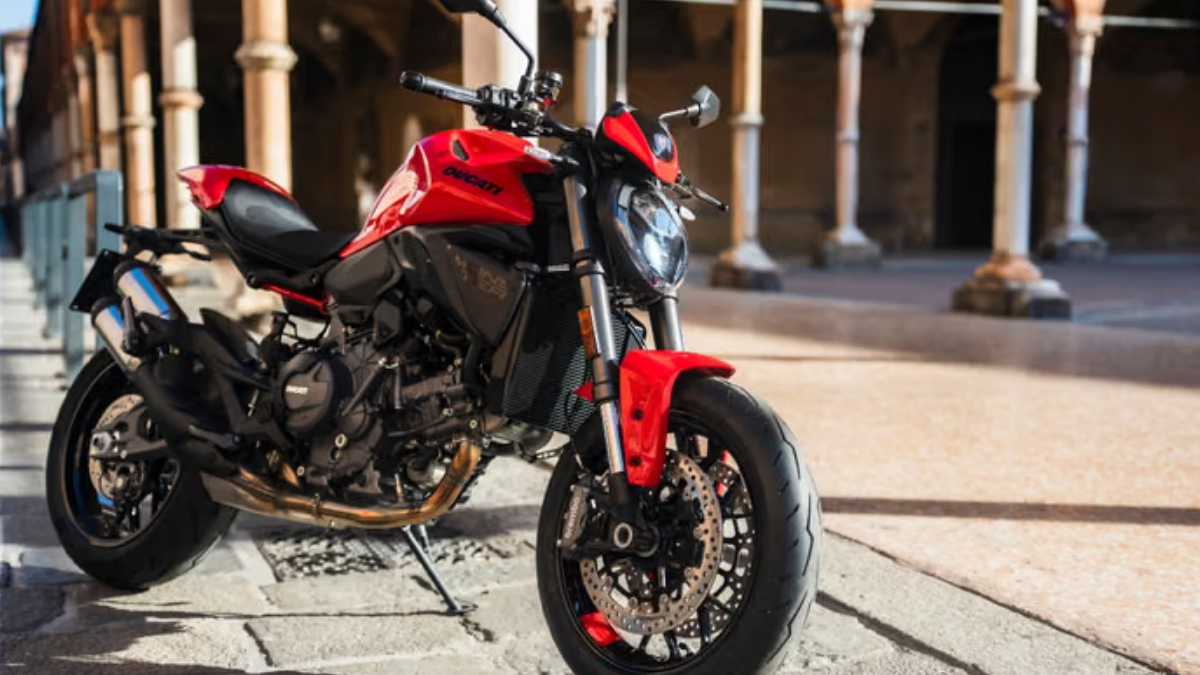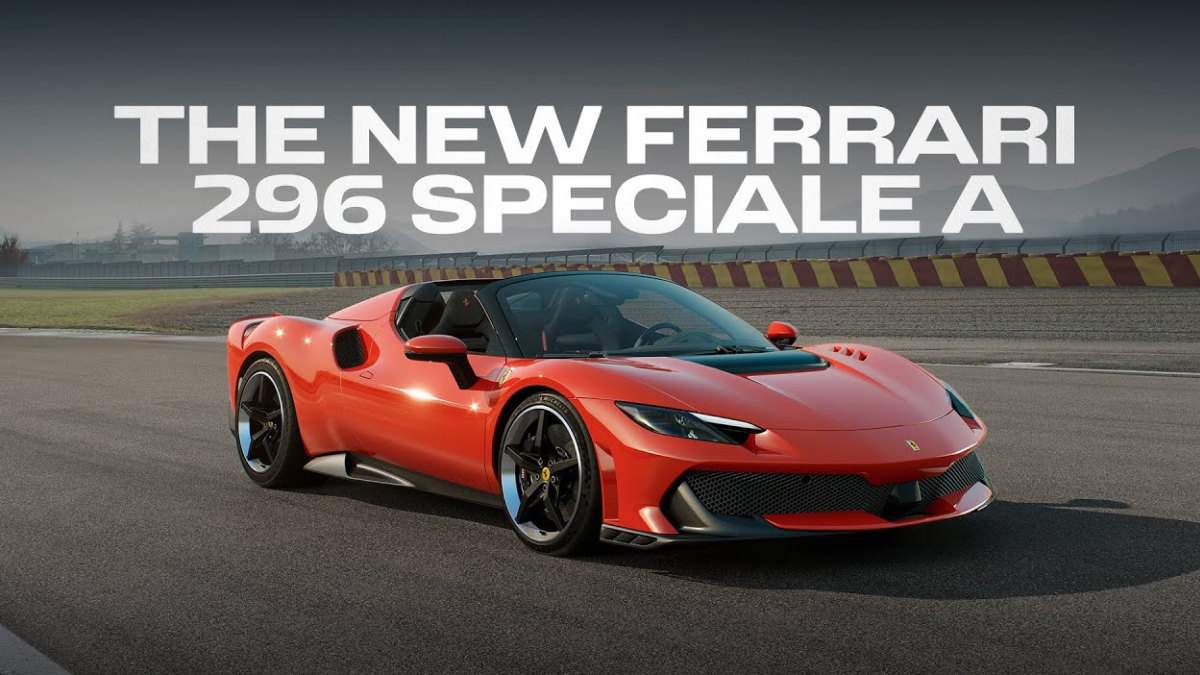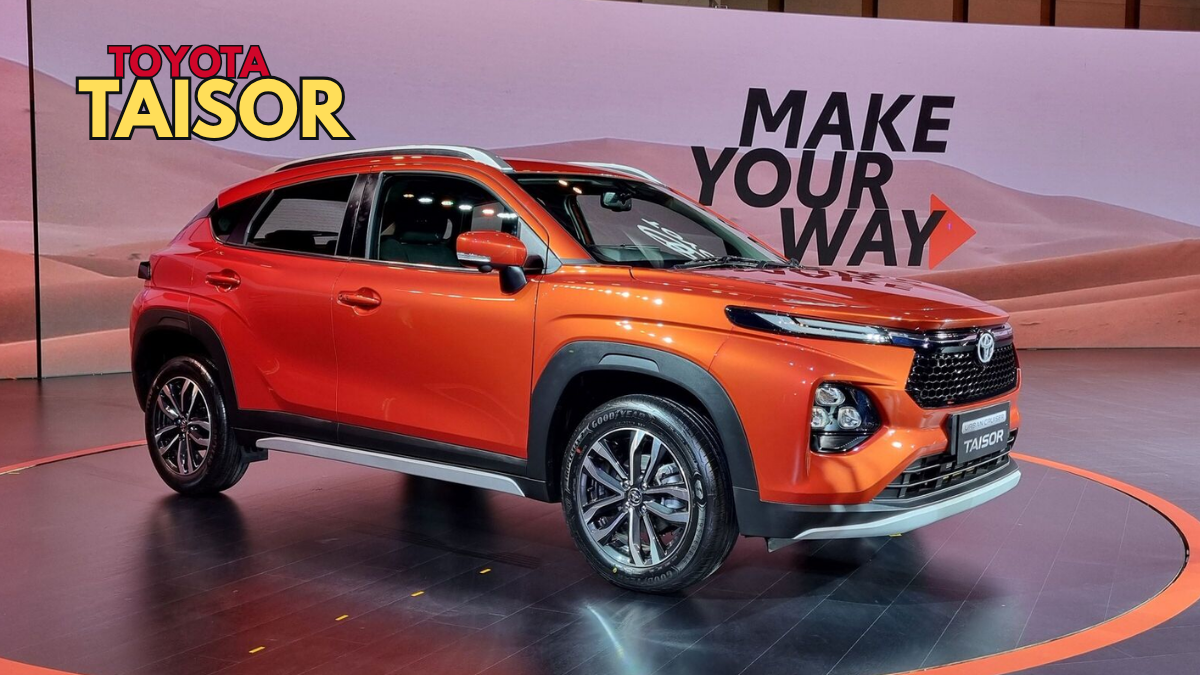Maserati’s refreshed mid-engined flagship gets a name that fits its mission. MCPura captures what the brand is aiming for in 2025 with its purest modern driver’s car. Where other models in the line chase luxury, practicality, or electric performance, this one narrows the brief to clarity, feedback, and connection. It builds on the MC20’s celebrated formula with subtle exterior sharpening, deeper chassis polish, and a cabin trimmed of distraction while keeping enough day-to-day civility to be usable.
Exterior Design and Engineering
Calling the update a facelift sells it short. Visually, MCPura still reads as MC20 at a glance, yet the surfacing and aero detailing feel more distilled. Maserati sticks to a split philosophy: a smooth, painted upper half that communicates sculpture and elegance, paired with a blacked-out lower zone that exposes mechanical intent and aero function. Classic supercar cues remain intact with a low, long, and wide stance, and the butterfly doors deliver drama every time they rise.
Paintwork is an obsession here. Even conservative blacks and greys have an unusually deep lustre, while richer multi-tone options like the evocative Night Interaction shift between purple, black, brown, and bronze depending on light. Triple-coat finishes and matte or textured applications broaden the canvas for personalization through the Fuoriserie program.
Under the skin sits a full carbon-fibre monocoque. Fibreglass body panels are chosen to keep mass in check and to achieve paint consistency over complex shapes. Aluminum subframes at each end support engine and suspension. The result is a very stiff, very light structure that becomes the foundation for the car’s dual character: supple GT on one setting and razor-edged track tool on another.
Quick Summary
Item |
Details |
|---|---|
Model |
2025 Maserati MCPura (mid-life facelift of MC20) |
Positioning |
Focused mid-engined Italian supercar prioritizing purity and driver involvement |
Construction |
Carbon-fibre monocoque with aluminum front and rear subframes |
Engine |
3.0-litre twin-turbo Nettuno V6, 630 hp, 720 Nm |
Transmission |
8-speed dual-clutch, rear-wheel drive |
Kerb weight |
1,475 kg Coupe, 1,560 kg Cielo Convertible |
Dimensions |
4,667 x 1,965 x 1,214 mm, wheelbase 2,700 mm |
Tyres |
245/35 R20 front, 305/30 R20 rear |
Fuel economy (WLTP) |
8.70 kpl Coupe, 8.55 kpl Cielo |
Standout tech |
Butterfly doors, adaptive suspension, nose-lift, optional carbon-ceramic brakes, ADAS suite |
Cabin vibe |
Alcantara and carbon, minimal switches, carbon bucket seats |
Verdict in brief |
Astonishing steering feel, broad chassis bandwidth, truly emotional yet surprisingly usable |
Official site |
Interior Space and Comfort
The cockpit strips away ornament to reduce visual noise. Leather gives way to Alcantara for glare control, and the carbon theme extends from the door cards into the dashboard for a cohesive look. Carbon bucket seats with laser-cut patterns hold you securely and are mounted with a slightly snug fit for larger frames. Power and heat functions are available, and multiple adjustments make it possible to dial in a proper driving position.
Storage is limited. A 50-litre frunk is best for small soft items and provides access to electrical service points. The 100-litre rear boot will take a couple of compact bags but runs hot due to proximity to the powertrain. Inside, a small glovebox, a wireless phone shelf, and a tiny under-armrest cubby complete the picture. If you expect family-car practicality, look elsewhere. If you value focus, MCPura delivers.
Features and Safety
Despite the pared-back aesthetic, equipment depth is strong. Twin 10.25-inch displays handle instruments and infotainment. The interface looks crisp but can feel a touch laggy compared with the very latest systems, and the small touch targets demand precision on the move. Welcome news is the return of physical controls for key functions on the steering wheel, including the starter and the essential nose-lift.
A digital rear-view mirror augments visibility, and you can specify a full ADAS suite along with surround-view cameras. An excellent Sonus Faber audio system remains optional. Adaptive suspension, selectable drive and damping modes, and the availability of carbon-ceramic brakes underline the performance intent while keeping a safety margin on road.
Performance and Powertrain
Everything funnels toward the Nettuno V6, a 3.0-litre twin-turbo mounted behind the seats. Outputs sit at 630 hp and 720 Nm, enough to deliver explosive pace given the modest kerb weight. The character is mechanical and intense rather than classically melodic. Expect induction whoosh, turbo wail, and wastegate chirrup layered over a guttural core. With the roof lowered on the Cielo, the soundtrack becomes immersive.
Modes matter. Wet, GT, and Sport provide distinct personalities. In GT, the car is surprisingly civil, with the active exhaust opening later and the dual-clutch shifting early and smoothly. Sport wakes the car up with sharper pedal mapping, earlier exhaust valves, crisper shifts, and a looser traction threshold that suits engaging road drives.
Hold the selector to unlock Corsa. It is track focused, trims back electronic safety nets, sharpens throttle to a knife edge, and snaps through upshifts. On public roads it is overkill, yet on circuit it reveals the chassis’s full bandwidth and the engine’s ferocity.
Ride, Steering, and Handling
The carbon tub’s stiffness allows Maserati to tune a wide spread of behavior. In GT mode, ride quality borders on astonishing for a mid-engined supercar, rounding off edges and filtering chatter that would upset lesser setups. Sport firms damping without becoming brittle. Corsa locks the body and brings track grade body control that pairs with the rapid responses the steering delivers.
Steering calibration is a highlight. Assistance is consistent across modes, weighting up naturally with speed while staying pin-sharp off center. Feedback is clear, build-up is linear, and precision makes tight roads a delight. Traction and stability strategies in Sport allow modest slip before tidying up, perfect for confident road driving. Corsa expects discipline and commitment, rewarding skill while punishing sloppy inputs.
Efficiency and Range
A 60-litre tank and WLTP figures of 8.70 kpl for the Coupe and 8.55 kpl for the Cielo point to a realistic touring range for a car of this type, provided you resist sustained high-load driving. Lighter mass helps, but rivals with hybrid systems will have an edge on paper economy. MCPura prioritizes feel and response over trick powertrain add-ons, and that philosophy shows up at the pump.
Value, Positioning, and Verdict
MCPura is a rare proposition in 2025. It rejects horsepower escalation and battery bulk in favor of authentic sensation. Pricing around the 4 crore rupee mark positions it below several hybrid mid-engine rivals that have moved well north of 5 crore, widening its appeal to purists who want an unfiltered experience. The Cielo carries a notable premium yet adds theater with negligible dynamic compromise.
Verdict: MCPura is Maserati’s guiding light. It rides elegantly, handles incisively, and communicates richly. The storage is meager and the infotainment could be slicker, but as a modern supercar that still feels analog in the ways that matter, it is deeply convincing.
Frequently Asked Questions
1) What is the core construction of the Maserati MCPura
A carbon-fibre monocoque with aluminum subframes front and rear. Body panels are fibreglass to balance mass and paint consistency.
2) How practical is the car for luggage and everyday use
Storage is limited to a 50-litre frunk and a 100-litre rear boot that runs hot. Inside storage is minimal. Daily use is possible thanks to adaptive suspension and nose-lift, but practicality is not the focus.
3) Which drive mode is best for public roads
GT for relaxed commuting and mixed conditions. Sport for spirited road driving with more response and a modestly relaxed traction threshold. Reserve Corsa for track days.
4) Does MCPura offer advanced driver assistance
Yes. You can specify a full ADAS suite along with surround-view cameras and a digital rear-view mirror. Carbon-ceramic brakes are optional for higher track durability.
5) How does the steering feel compared with rivals
Assistance is natural and consistent. The rack is quick without feeling nervous, and feedback is excellent, making it one of the most engaging modern setups in this class.
Official site
https://www.maserati.com
For More Information Click HERE

